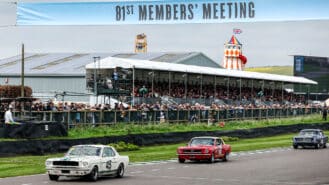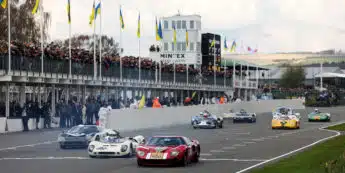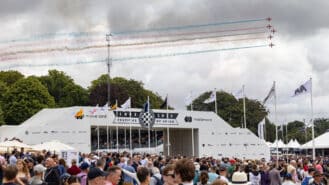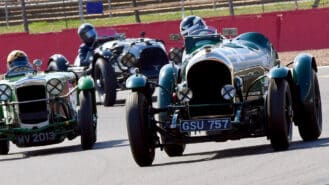It is sad but true that the reason mid-50s sports racing Ferraris were so competitive in their day is precisely the same reason for their inability to stay the pace of their peers in historic racing 60 years later. A Ferrari of the mid-1950s was never going to be more slippery than a Jaguar D-type, nor out-handle an Aston DB3S, but it could be relied upon to produce more power for a given capacity than either, and that was its strength.

As the old adage went, back then when you bought a new Ferrari, you paid for the engine and Ferrari threw in the rest of the car for free. And competitive they were: in the 1956 World Sportscar Championship, Ferraris won three of five rounds and, more significantly, occupied 11 of the 15 available podium positions.

The problem is that that in the intervening lifetime, all its rivals have found power they’d never have enjoyed in period while the Ferraris have pretty much stood still. Why? Because while its British rivals have road-derived engines, Ferrari’s were designed as pure racing motors, often derived from F1 units and already tuned as far as they could reliably go.
And despite all the advances made in metallurgy and computer-aided design, unless you simply cheat and build up an engine with larger internal dimensions, the power achieved today is not so very different to that realised all those years ago. In the case of a 750 Monza, that’s about 260bhp from a 3-litre, four-cylinder twin-cam motor. How much power do the latest Jaguar D-type engines make? Three-hundred and plenty.

Which is why this year’s Lavant Cup was such a special event. Having been lucky enough to be in it, I know my viewpoint could be seen as being somewhat skewed, but the sight of 23 drum-braked sports racing Ferraris lining up on a finally and briefly even playing field was one of the most beautiful of very many beautiful sights I have seen at Goodwood.
It was remarkable to see so many cars brought out just for this race, cars of a type that might otherwise be rare sights indeed, even at Goodwood. And while I hate to drag a subject as grubby as values into it, it was at least worth pondering whether this was the most valuable field of cars to race there. I thought it at least possible, as – perhaps more significantly – did Max Girardo of RM Sotheby’s, who’d turned up in an impossibly attractive and impressively quick 1958 Tour de France.

Other cars that reunited me with my inner schoolboy included a mighty 375MM Spider and 340MM with their huge V12 motors, while the comparatively little 250MM coupé of Holly Mason-Franchitti looked resplendent in its Carrera Panamericana livery.
But it was the big bangers that held the day, with the top three positions held by four-cylinder cars for most of the race until final drive failure ended my dream of putting the 750 Monza I was driving back on the Goodwood podium for the first time since Mike Sparken came second here 60 years ago. Actually I’ve been told he won the race but was penalised for a jump start, though someone more learned than I may be able to put me straight on that.
So the fight came down to Carlos Monteverde’s splendidly battered 750 Monza (known to all as the ice racer, thanks to a late ‘50s career in Finland, often indeed on ice) and the immaculate, lightning fast 500TRC of James Cottingham who, after contact with Monteverde resulted in a gyrating ice racer, eased away to a convincing win while I sat on the bank at Lavant and tried to look phlegmatic.
I’d like to say I wasn’t bothered, that it was the taking part that counted, but that would not be true. Even so it did allow me the one pleasure denied all those who finished the race, and that was to sit back in the sunshine and watch some of the most gorgeous cars ever created by the world’s greatest constructor of racing cars roar around the circuit at which I am happiest of all. And even as I cursed my misfortune, it did occur to me that this was a pretty special sight, the likes of which I had not seen before. I hope that one day I will again.










